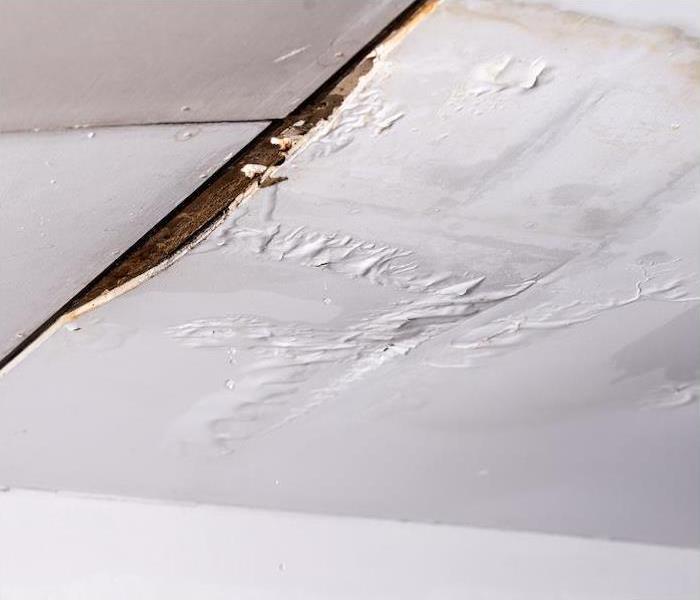How Water Gets Inside Your Home Unexpectedly | SERVPRO® of Northwest Bergen
12/12/2022 (Permalink)
 If you experience damage due to a winter storm, call SERVPRO of Northwest Bergen. We have the experience and equipment for any issue.
If you experience damage due to a winter storm, call SERVPRO of Northwest Bergen. We have the experience and equipment for any issue.
It’s not always easy to spot water seepage, but you can look for some key indicators. Excess moisture causes an unpleasant odor; you may also see peeling paint or stains on flooring and walls.
This additional moisture can also cause your appliances to rust, but there are many signs to be aware of. The most obvious sign is a puddle on the floor.
Water damage can result in disastrous outcomes for your home, so keep reading as we uncover the usual suspects and some measures you can take.
<h3fixture-leaks">Water Fixture Leaks
Your home’s water fixtures are not without fault, and holes in your water supply lines can often allow moisture to seep out unexpectedly. Look near the shower, bathtub, sink or toilet for this issue.
Inspect these zones during your cleaning routine, and take action against leaks immediately to prevent thousands of gallons of water from entering your home each year.
<h3from-appliances">Water From Appliances
Refrigerators with water supplies and ice makers can cause leaks, too. Dishwasher leaks usually occur in small amounts over long periods, causing significant damage to your flooring underneath.
Properly inspect for leaks by unplugging the appliance and pulling it out slowly. Check for the presence of water or mold, and contact our restoration team when you notice something to solve the damage fast.
<h3sources">External Sources
Naturally, water damage can also come from outside. A large number of leaks begin externally, with moisture making its way inside through window frames, doorways, and other spots.
In Bergen, we know the dangers of weather-related moisture. We see over 47 inches of rain and over 26 inches of snow annually. While the rain typically is dispersed year-round, the snow piles up and melts altogether, causing abundant water to flow through our properties and streets.
Leaks can come from both inside and outside, but there are steps you can take to manage both causes. Set your house up the right way, and maintain it properly to protect it against water damage.
Begin by watching your gutters and downspouts. These frequently clog and allow water to pool on your roof. This extra water weight can allow moisture to seep inside and even cause a partial collapse where the water is located.
Inspect the seals on your windows and doors, and replace any that you can tell aren’t working properly. Lastly, consider implementing landscaping techniques that direct water away from your home. Follow these steps and improve your home’s ability to fight water damage.
If you experience water damage inside your home or business, call us, 24⁄7. We have the experience and equipment to get your property back in working order fast.




 24/7 Emergency Service
24/7 Emergency Service